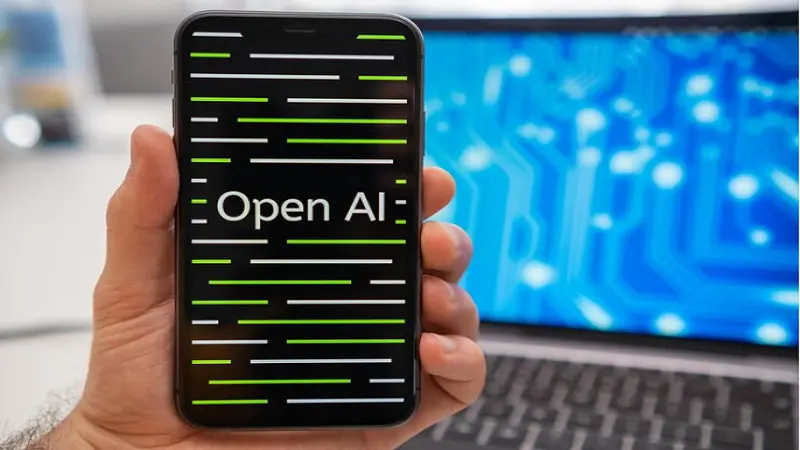Artificial Intelligence (AI) has rapidly transformed various sectors, from healthcare to finance, entertainment to education. At the forefront of this transformation is Sources Openai 1.6b 1.3b Midoctober Openai, an organization that has consistently pushed the boundaries of what’s possible in AI. Among its many achievements is the development of large language models that can understand and generate human-like text. In this article, we’ll explore the significance of OpenAI’s 1.6 billion parameter (1.6B) and 1.3 billion parameter (1.3B) models, their release around mid-October, and the impact they’ve had on the AI landscape.
The Rise of Large Language Models
To understand the importance of Sources OpenAI 1.6b 1.3b Midoctober OpenAI models, it’s essential first to grasp the broader context of large language models. These models are trained on massive datasets and use deep learning techniques to generate human-like text. The key to their effectiveness lies in their size; the more parameters a model has, the more complex relationships it can learn, leading to more nuanced and contextually appropriate text generation.
OpenAI’s journey with large language models began with the release of the GPT (Generative Pre-trained Transformer) series. Each iteration of GPT represented a significant leap forward in terms of capability and sophistication. These models could write essays, create poetry, generate code, and even hold conversations that, in some cases, were indistinguishable from those with humans.
The 1.6B and 1.3B Models: A Mid-October Release
Around mid-October, OpenAI released two models that would further solidify its position as a leader in the AI field: the Sources OpenAI 1.6B 1.3B Midoctober OpenAI models. These models, with their vast number of parameters, were designed to strike a balance between computational efficiency and performance. But why were these specific models so significant?
A Step Toward Accessibility
One of the most notable aspects of the Sources OpenAI 1.6B 1.3B Midoctober OpenAI models is their accessibility. While larger models like GPT-3, with its 175 billion parameters, are incredibly powerful, they also require significant computational resources to run. This can be a barrier for smaller organizations or individual developers who may not have access to such resources.
The 1.6B and 1.3B models, however, offer a compromise. They are large enough to generate high-quality text but small enough to be run on more modest hardware. This has opened up new possibilities for a broader range of users to experiment with and deploy AI in their projects.
Versatility in Application
Despite their smaller size compared to models like GPT-3, the 1.6B and 1.3B models are highly versatile. They can be fine-tuned for various tasks, from content creation and customer support to more specialized applications like legal document analysis or medical report generation.
This versatility is due to the model’s ability to learn from diverse datasets. By training on a wide range of text, these models can adapt to different contexts, making them valuable tools for many industries. The 1.6B and 1.3B models are particularly effective in scenarios where computational efficiency is crucial, such as in mobile applications or real-time systems.
The Technical Underpinnings
To truly appreciate the Sources OpenAI 1.6B 1.3B Midoctober OpenAI models, it’s worth diving into the technical aspects of their development. Both models are built on the Transformer architecture, which has become the standard for natural language processing (NLP) tasks. The Transformer model relies on a mechanism called self-attention, which allows the model to weigh the importance of different words in a sentence when making predictions.
The self-attention mechanism is particularly powerful because it enables the model to capture long-range dependencies in text. This means that the 1.6B and 1.3B models can understand the context of a word not just based on the words immediately preceding it, but on words that might be much earlier in the sentence or even in previous sentences. This ability to maintain context over long stretches of text is a key reason why these models are so effective at generating coherent and contextually appropriate text.
Training and Fine-Tuning
Training these models is no small feat. It involves feeding the model vast amounts of text data and using powerful GPUs or TPUs to optimize the model’s parameters. The training process can take weeks or even months, depending on the size of the model and the computational resources available.
Once trained, the models can be fine-tuned for specific tasks. Fine-tuning involves taking a pre-trained model and training it further on a smaller, task-specific dataset. For example, a model could be fine-tuned on medical literature to generate medical reports or on legal documents to assist with legal research. This process allows the 1.6B and 1.3B models to be adapted to a wide range of applications, making them incredibly versatile tools in the AI toolbox.
The Impact of the 1.6B and 1.3B Models
The release of the Sources OpenAI 1.6B 1.3B Midoctober OpenAI models around mid-October marked a significant milestone in the AI community. Their impact can be seen in several key areas:
Democratization of AI
Perhaps the most significant impact of these models is the democratization of AI. By providing powerful models that are more accessible in terms of computational requirements, OpenAI has enabled a broader range of users to leverage AI technology. This has led to an explosion of creativity and innovation as individuals and smaller organizations experiment with AI in ways that were previously out of reach.
Enhancing Creativity and Productivity
The 1.6B and 1.3B models have also had a profound impact on creativity and productivity. These models can assist with content creation, from writing articles and generating ideas to composing music and creating art. For professionals, they offer a way to automate routine tasks, freeing up time for more strategic or creative work.
For example, a marketing professional might use these models to generate ad copy or social media posts, allowing them to focus on strategy and campaign planning. A software developer might use the models to assist with code generation, reducing the time spent on boilerplate code and allowing them to focus on more complex problems.
Advancements in NLP Research
In the research community, the 1.6B and 1.3B models have contributed to advancements in natural language processing. Researchers can use these models as a baseline for developing new techniques or as a tool for exploring new applications of AI. The accessibility of these models has also led to more diverse participation in AI research, as researchers who may not have access to the resources needed to train a model from scratch can still contribute to the field.
Challenges and Considerations
While the Sources OpenAI 1.6B 1.3B Midoctober OpenAI models represent significant advancements in AI, they are not without challenges. One of the most pressing issues is the ethical considerations surrounding their use. As with any powerful tool, there is potential for misuse. For example, these models could be used to generate misleading or harmful content, raising concerns about misinformation and the spread of fake news.
Another challenge is the environmental impact of training large language models. The process of training these models requires significant computational resources, which in turn consume large amounts of energy. This has led to discussions within the AI community about how to make AI research and development more sustainable.
The Future of AI with Mid-Sized Models
Looking ahead, the success of the 1.6B and 1.3B models suggests that mid-sized models will continue to play a crucial role in the AI landscape. As the technology behind these models evolves, we can expect to see even more efficient models that offer a balance between power and accessibility.
One potential area of development is integrating these models into everyday devices. Imagine a world where your smartphone or home assistant is powered by a model like the 1.6B, offering personalized assistance and seamlessly integrating into your daily life. This could revolutionize how we interact with technology, making AI an even more integral part of our lives.
Another exciting possibility is the use of these models in education. With their ability to generate high-quality text, the 1.6B and 1.3B models could create personalized learning experiences, offering students tailored content and feedback based on their needs. This could lead to more effective and engaging learning experiences, helping to bridge the gap between traditional education and the potential of AI.
Conclusion
The release of Sources OpenAI 1.6B 1.3B Midoctober OpenAI models in mid-October marked a significant milestone in AI. These models, with their balance of power and accessibility, have democratized access to AI technology, enabling a broader range of users to experiment with and benefit from AI.













